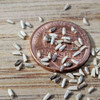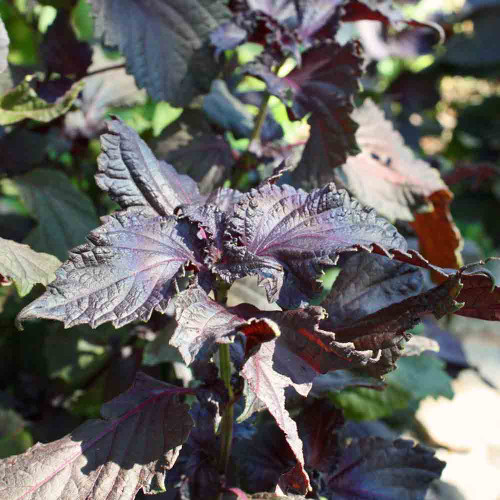Description
Frisee Endive - Go Beyond Lettuce, Discover Frisee
Growing Frisee Endive is your secret to bringing the classic taste of a French bistro into your own kitchen. The robust outer leaves provide a textural foundation, but the real prize is the tender, pale-yellow heart, which rewards you with a mild, almost savory richness and an exceptionally tender core you have to taste to believe. Far from being a fussy gourmet green, Frisee is as easy to grow as lettuce, rewarding you with a sophisticated harvest that will elevate your salads from simple to sensational.
Details
Frisee Endive is a cool-season biennial, though you will grow it as an annual for its crisp, edible leaves. Botanically, it is a member of the chicory family, renowned for its sophisticated, pleasantly bitter flavors and includes esteemed cousins like radicchio and escarole. Its scientific name, Cichorium endivia var. crispa, refers to its most defining feature: the finely divided, curly leaves that form a large, spreading rosette and are the source of its French name, "Frisée." A mature head can reach a height of 10 to 16 inches, with a substantial presence in the garden. Its character is defined by a natural color gradient, from the deep green of the outer leaves to the creamy white and pale yellow of its dense inner heart. Shielded from the sun, this dense inner heart develops a tender texture and a creamy-white to pale-yellow color, providing a beautiful counterpoint to the robust outer leaves.
History
Like its chicory cousins, Frisee Endive has a history deeply rooted in the ancient world. Its wild ancestor is native to a broad region stretching from the Mediterranean to India, with its use documented by the ancient Egyptians, Greeks, and Romans. Pliny the Elder, the Roman naturalist, mentioned its use in the 1st century AD. It became a staple in European gardens through the Middle Ages, but its transformation into the gourmet green we know today is credited to 19th-century French and Belgian market gardeners. Historic heirloom varieties, such as 'Très Fine Maraîchère' and 'Frisée de Ruffec', tell the story of this refinement, tying the plant to the specific places and horticultural traditions that shaped it. It's important to note the distinction between Frisee and Belgian Endive; while often confused, Frisee (Cichorium endivia) is a leafy green grown in fields, whereas Belgian Endive (Cichorium intybus) is a pale bud forced from a root in darkness.
Uses
In the kitchen, Frisee is prized for the textural contrast and nuanced flavor it brings to the table. Its outer green leaves possess pleasant, assertive characteristics, while the tender, pale-yellow heart is exceptionally mild, subtly sweet, and has a delightful, sophisticated flavor. This dual character makes it a uniquely versatile ingredient. Its most iconic role is as the foundation of the classic French bistro dish, Salade Lyonnaise, where its sturdy leaves perfectly capture the warm vinaigrette and runny egg yolk. You'll find it pairs beautifully with rich fats like bacon and duck confit, sweet fruits like pears and citrus, and sharp cheeses like goat or blue cheese. While famous in salads, Frisee is remarkably versatile when cooked, as heat mellows its bitterness and brings out a surprising sweetness. It can be quickly sautéed, grilled in whole heads, or torn into soups and stews.
Companion Planting
You will find that Frisee Endive grows well with a variety of garden companions. It benefits from being planted near aromatic herbs like rosemary, sage, and thyme, which can help to deter pests. It is also a good neighbor for root vegetables such as carrots and parsnips. As a member of the chicory family, it shares similar growing needs with lettuce and other leafy greens, and they can be planted together in succession for a continuous harvest.
You should avoid planting it near fennel, as fennel can inhibit its growth.
Planting and Growing Tips
Frisee is a cool-season crop, with plantings timed to mature before the onset of intense summer heat or after it has subsided. In colder zones (4-7), you can start seeds indoors 6-8 weeks before the last frost for a spring crop, or direct-sow in late summer for a fall crop that sweetens with light frost. In warmer zones (8-10), the ideal planting time is late summer or early fall for a long harvest through the milder winter and into early spring.
Sow seeds 1/4 inch deep and about 6 to 8 inches apart, thinning them to a final spacing of 8-12 inches once seedlings are a few inches tall. Frisee thrives in fertile, well-drained soil amended with plenty of compost. Consistent moisture is critical, as dry soil can trigger bolting and excessive bitterness. In areas with hot summers, providing afternoon shade is important for extending the harvest and maintaining quality.
Harvest Tips
You can begin harvesting your Frisee Endive in two ways. For a "cut-and-come-again" supply of young leaves for salads, you can start snipping the outer leaves of the plant as soon as they are large enough, leaving the central growing point to produce more. For full, dense heads with a well-blanched heart, wait until the plant is nearly mature, about 80-90 days from sowing, and harvest the entire head by cutting the plant at the soil line with a sharp knife. For the best flavor and texture, it is ideal to harvest in the cool of the morning.
Learn More
From the soil to the seed to the food you eat - we'll help you grow your best garden!
2 Reviews
-
Frisee Endive
I had excellent germination (100%) with my Frisee Endive. I'm looking forward to continue growth under my grow lights!
-
Best frisée ever!
Never would we have believed that this would be so successful in a Chicagoland summer with fluctuating (and extreme) temperatures and rainfall. Looks exactly like your photo. Delicious. We’ll recommend and order again! Thanks!

















